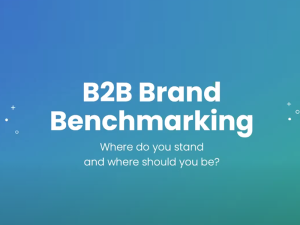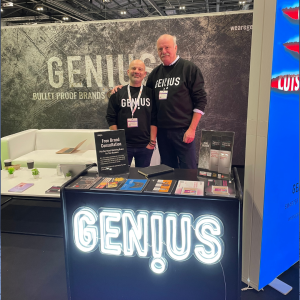Today we’re going to look at how big ideas can drive big returns in marketing. What we mean by big ideas is conceptual advertising. In order to understand what that is, I guess you have to understand what it isn’t. A standard way of constructing a marketing message is to figure out:
All of that ends up being quite wordy and potentially quite similar to a lot of other ads that they might see. When we talk about conceptual advertising, we take all that good strategic work around the messaging and we identify a visual, verbal vehicle (or sometimes a blend of the two) to explain that in a way that is instantly comprehensible without having to give them a load of bullet points about why what you do is brilliant. In order to really understand what we’re talking about with conceptual advertising, I thought we might look at a few examples. The first being Tabasco. Tabasco could have riffed on for hours about how punchy their source was, how it was going to set your mouth on fire, but they didn’t. They just put their branding over a grenade, and you instantly understand that that is a source that’s going to pack a punch when it hits your mouth. FedEx similarly could have spent ages explaining how fast their global shipping service is, how easy it is to use, how you just basically don’t notice the transition. You pop the parcel in the post and it appears in Australia, but they didn’t. Instead, they used a really clever visual of somebody leaning out of their window in one country and passing a parcel to a friend or colleague in another country. It explains all of those benefits instantly, in a very clear visual way without having to write a load of copy to back it up. The next example I wanted to look at was from Faber Castell. Again, they could have spent a lot of time explaining how true to life their colours were. What pigments they used, all that kind of stuff, but they didn’t. Instead, they just blended their pencil directly into a real life object and you instantly get that brown colour is the exact colour of a dachshund. The next example from Volkswagen I really, really like because car ads are notorious for just being, “Ooh, look. It’s a big shiny car. Don’t you want to buy it?” Instead, they take this really clever visual metaphor to sell their precision parking feature. There’s not even a car in the ad, but you instantly get why it’s important. There you have it. That’s conceptual advertising. The whole point of it is that you get your message across to your customer almost instantaneously in a way that is engaging and interesting to them, and that will stand out compared to all your competition who are just making similar claims in a big string of bullets down the side of their ads.
- What’s great about your product service?
- What does it do that other things don’t?
- How does it best serve the customer?
- How can you really relate that to the customer’s needs?
All of that ends up being quite wordy and potentially quite similar to a lot of other ads that they might see. When we talk about conceptual advertising, we take all that good strategic work around the messaging and we identify a visual, verbal vehicle (or sometimes a blend of the two) to explain that in a way that is instantly comprehensible without having to give them a load of bullet points about why what you do is brilliant. In order to really understand what we’re talking about with conceptual advertising, I thought we might look at a few examples. The first being Tabasco. Tabasco could have riffed on for hours about how punchy their source was, how it was going to set your mouth on fire, but they didn’t. They just put their branding over a grenade, and you instantly understand that that is a source that’s going to pack a punch when it hits your mouth. FedEx similarly could have spent ages explaining how fast their global shipping service is, how easy it is to use, how you just basically don’t notice the transition. You pop the parcel in the post and it appears in Australia, but they didn’t. Instead, they used a really clever visual of somebody leaning out of their window in one country and passing a parcel to a friend or colleague in another country. It explains all of those benefits instantly, in a very clear visual way without having to write a load of copy to back it up. The next example I wanted to look at was from Faber Castell. Again, they could have spent a lot of time explaining how true to life their colours were. What pigments they used, all that kind of stuff, but they didn’t. Instead, they just blended their pencil directly into a real life object and you instantly get that brown colour is the exact colour of a dachshund. The next example from Volkswagen I really, really like because car ads are notorious for just being, “Ooh, look. It’s a big shiny car. Don’t you want to buy it?” Instead, they take this really clever visual metaphor to sell their precision parking feature. There’s not even a car in the ad, but you instantly get why it’s important. There you have it. That’s conceptual advertising. The whole point of it is that you get your message across to your customer almost instantaneously in a way that is engaging and interesting to them, and that will stand out compared to all your competition who are just making similar claims in a big string of bullets down the side of their ads.










